Once our few days in Naples were over, we moved on to Sorrento.
Our itinery was starting to tick off nicely (only Capri was missed so far). On the list yet to see was Sorrento (with Positano, Pompeii, Vesuvius) and Amalfi Coast with Ravello.
Sorrento
We arrived in Sorrento and the hotel had given us a great introduction by leaving Kathryn a cake and a bottle of bubbly.
Neither of us are particularly keen for ‘bubbly’ but it’s always good to get freebies, and the cake was nice.

We also had a fantastic view looking out to Vesuvius from our hotel balcony.

We made our way down to the town to look around to find a Main Street full of shops and restaurants. You can immediately see why Sorrento is popular, it is a very pretty and clean place.
More of Sorrento later…
Positano
We got the bus to Positano and due to the recommendations for visiting this location, I was looking forward to seeing it.
The bus stops at the top of the cliff and you make your way down through lovely winding roads with alleyways and steep staircases aplenty.
The view of Positano as you wander down is jaw-dropping.

We called in at a café with a view overlooking the beach and had coffee and cake and watched a little of a Napoli football match on the TV.
With Norwich City fortunes in a low place at the moment, I couldn’t help but notice the intensity, effort, aggression and determination from the players on screen that I don’t observe with our home team.
We made our way down towards the beach via a series of shops, cafés and restaurants. It was easy to observe the price of things were higher here than Naples.
We reached the church where there was a wedding in motion and it’s easy to see why many splash out and have their nuptials and honeymoon here.

We got to the beach and were amazed by how gorgeous it was – the blue colour of the sea was really something.
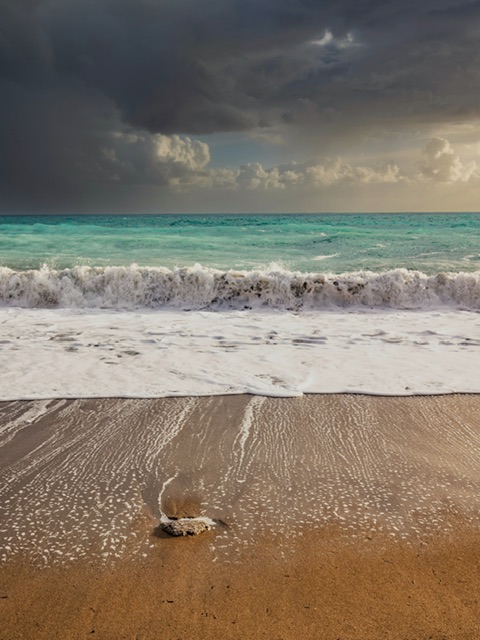
With the lovely sea, the tide water coming towards us and the gorgeous scenery, I was loving the photographic opportunities here so took loads of shots. This was “swooshery” Italian-style!

I was particularly keen to capture the sea water crashing against this rock platform and the shot below is my best one.
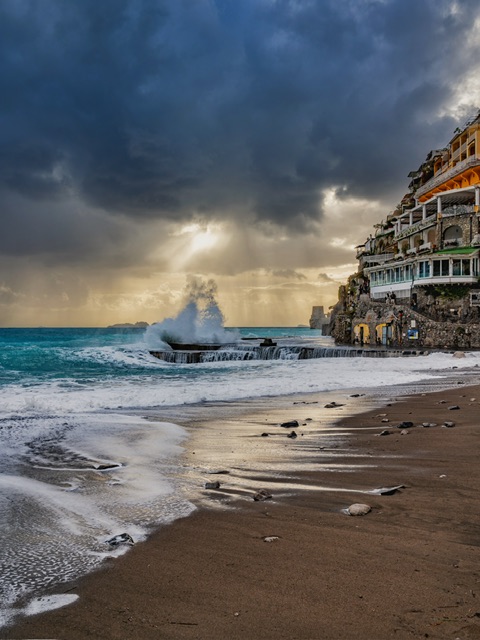
Considering I was shooting handheld with no tripod or filters, I had a challenge to get the right exposure not to blow out the bright parts of the image but have an exposure time to get the motion in the water.
We spent a lot of time on the beach and I was loving this location but it was time to head back. This location is so popular that you need to ensure you check bus times as you’ll have to queue up.
On the way up the hill to the bus stop, we took many photos of the amazing view looking down.
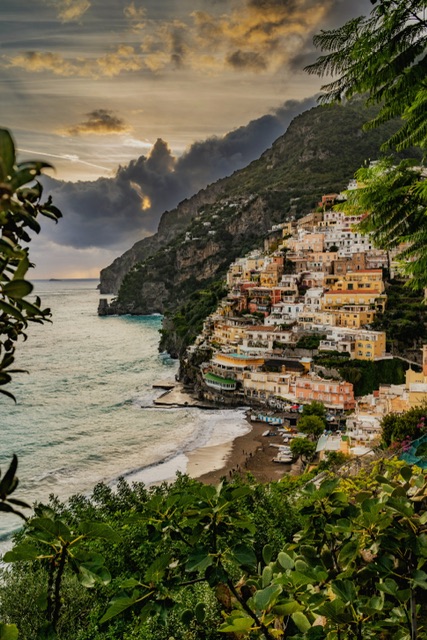
Pompeii
The next day we were picked up for our Pompeii private tour by a very chatty driver Carlos who was having a most animated phone conversation with his Mama.
Sadly, the Vesuvius part of the tour was cancelled due to the location being closed because of bad weather – we knew from the forecast that strong winds and rain would put both visits at risk, so we were pleased we were going to see Pompeii.
We arrived at Pompeii and were handed over to Umberto, who reminded us of Gino De’Campo in his look and voice.
Below is our first view of the site on arrival.
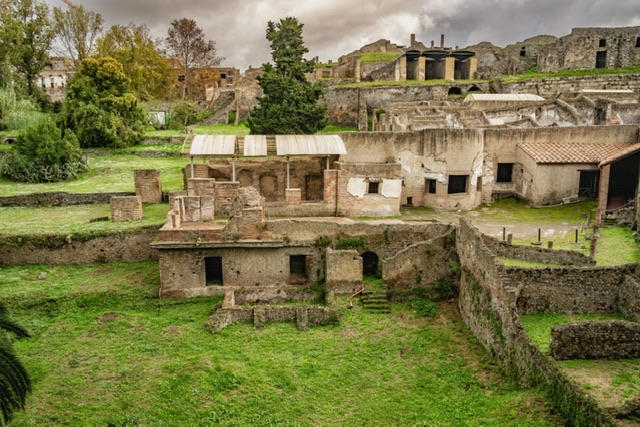
About Pompeii
Pompeii (/pɒmˈpeɪ(i)/pom-PAY-(ee), Latin: [pɔmˈpei̯.iː]) was an ancient city located in what is now the comune of Pompei near Naples in the Campania region of Italy.
Pompeii, along with Herculaneum and many villas in the surrounding area (e.g. at Boscoreale, Stabiae), was buried under 4 to 6 m (13 to 20 ft) of volcanic ash and pumice in the Eruption of Mount Vesuvius in 79 AD.
Largely preserved under the ash, the excavated city offers a unique snapshot of Roman life, frozen at the moment it was buried, although much of the detailed evidence of the everyday life of its inhabitants was lost because of excavations.
It was a wealthy town, with a population of ca. 11,000 in AD 79, enjoying many fine public buildings and luxurious private houses with lavish decorations, furnishings and works of art which were the main attractions for the early excavators.
Organic remains, including wooden objects and human bodies, were interred in the ash. Over time, they decayed, leaving voids that archaeologists found could be used as moulds to make plaster casts of unique, and often gruesome, figures in their final moments of life.
The numerous graffiti carved on the walls and inside rooms provide a wealth of examples of the largely lost Vulgar Latin spoken colloquially at the time, contrasting with the formal language of the classical writers.
Pompeii is a UNESCO World Heritage Site and is one of the most popular tourist attractions in Italy, with approximately 2.5 million visitors annually.
The Tour
Umberto was showing us around and explaining the history of the area. The spas with their network of water channels in the walls and the detailed carvings were incredible.

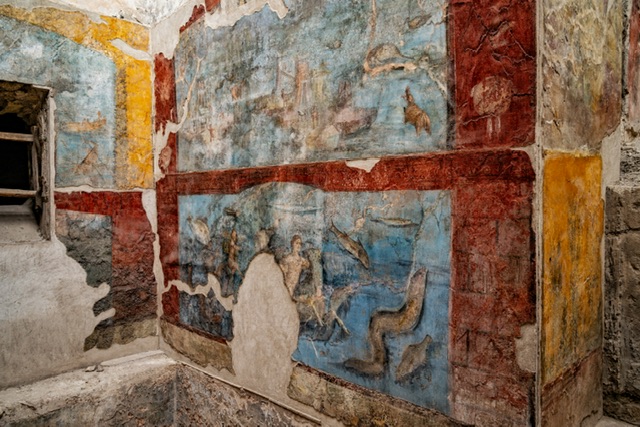
We would see lots of mosaics on this tour for which the detail and effort it must have taken to create such artwork was amazing.
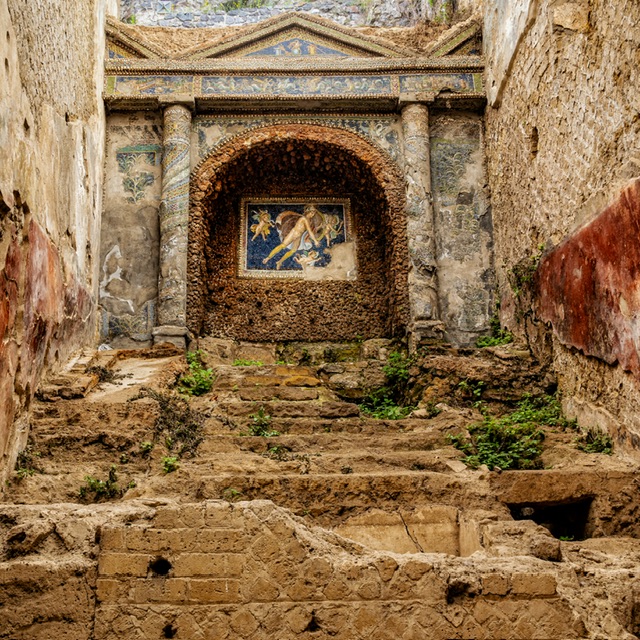
There are some bodies of the victims of the eruption outside and inside the site which is one the well-known sights of this place.
These frozen in time remains are actually casts or replicas with the originals preserved elsewhere. Nevertheless, they provide a shocking insight into the rapidness in which the victims met their demise, probably a good thing since their deaths were the result of asphyxiation from the toxic smoke.
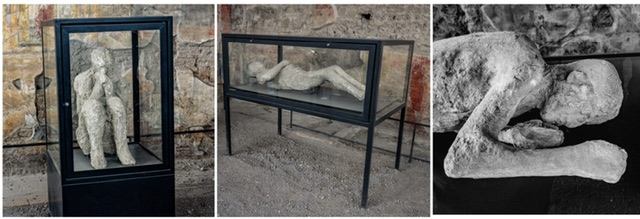
Umberto took us to one of the main streets and we were always surprised at the significant uneven nature of the cobbled street although there were grooves either side to guide the wheels of the carriages.
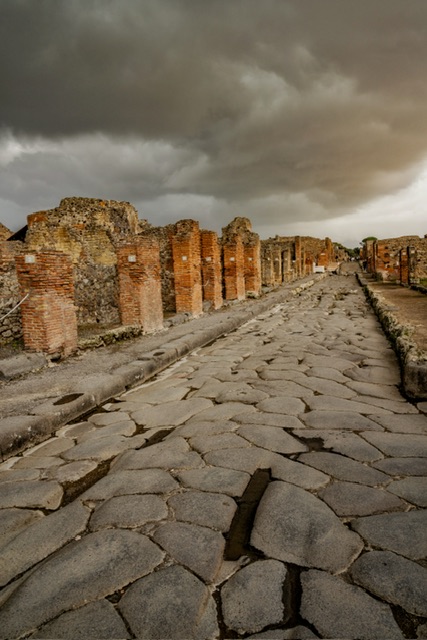
I grabbed this shot of an oven and several kilns.
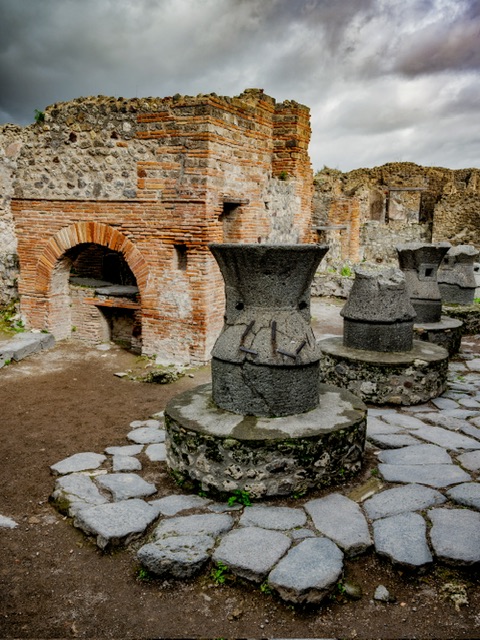
Dotted around the site are some classic Italian historic structures.
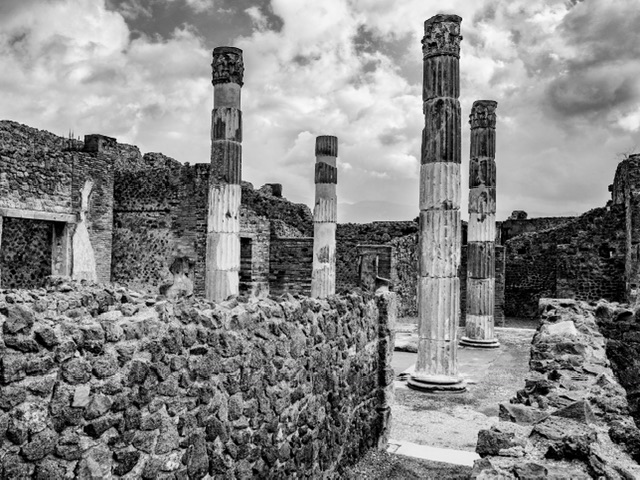
As we came to the end of the tour, we were shown more mosaics on the floor, and we were amazed at the detail of them, and what effort there must’ve been in that day to create them.

Sorrento
On our return, we had a late afternoon wander around Sorrento, mainly along the many streets where there are shops and restaurants. It is a very clean and pretty town and you can immediately see why it is a popular location.
I loved this graffiti (sorry, wall art).

As we wandered around the town, I was still half-looking for an image that might qualify for the club’s “Urban Jungle” theme.
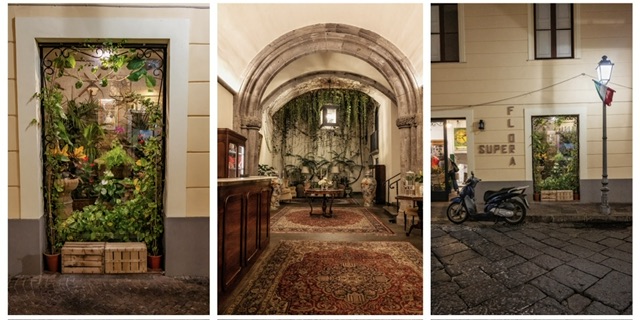
Full day in Sorrento
We went beyond the local streets to a harbour at Marina Grande.

There is an excellent viewing point looking out to sea at Vesuvius.
The sign which says Viene Dal Mare translates to “It came from the sea…”
We made our way round some very nice quiet side streets standing aside as the occasional car and moped came racing by to turn into a narrow adjoining street.
Another moment where I wondered if there was an urban jungle shot.
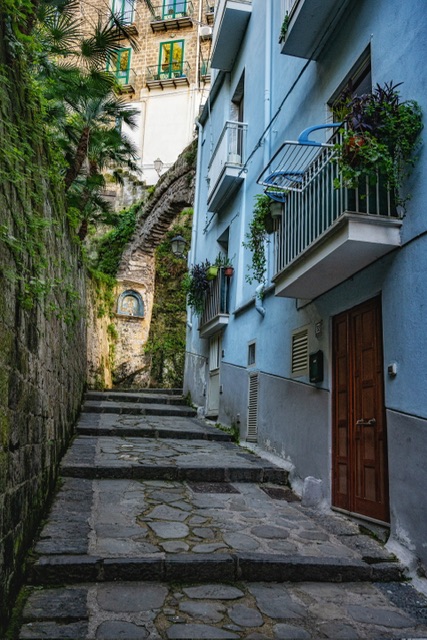
I enjoyed capturing another interesting street mural.
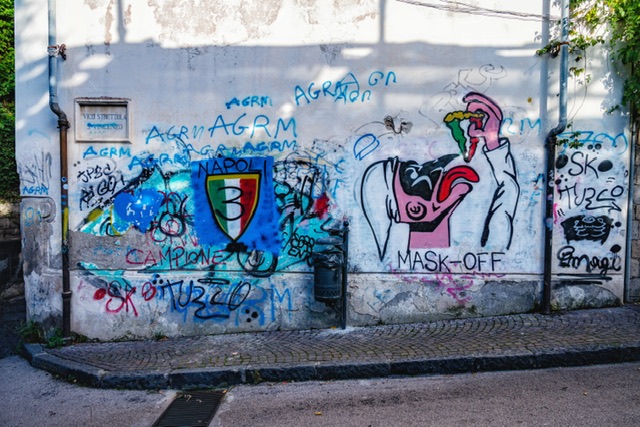
There were interesting scenes and plenty of things to photograph.

Our Sorrento visit was done, and we enjoyed a nice evening meal the headed back to pack.
Onwards and upwards…